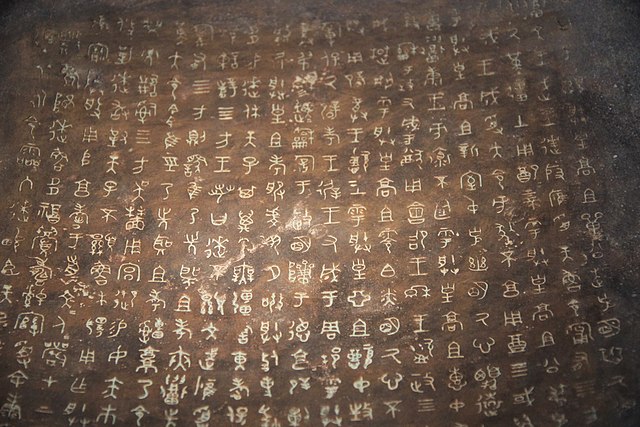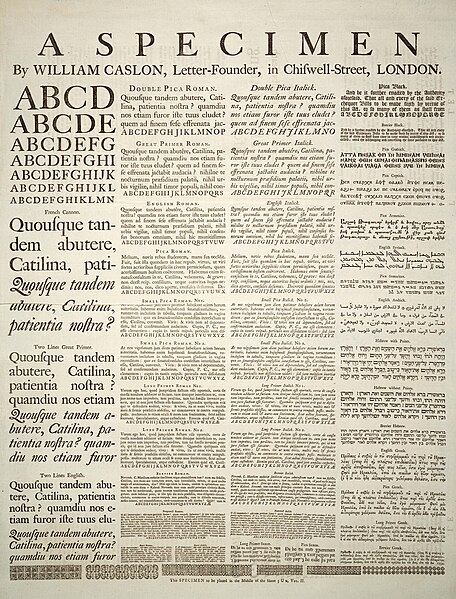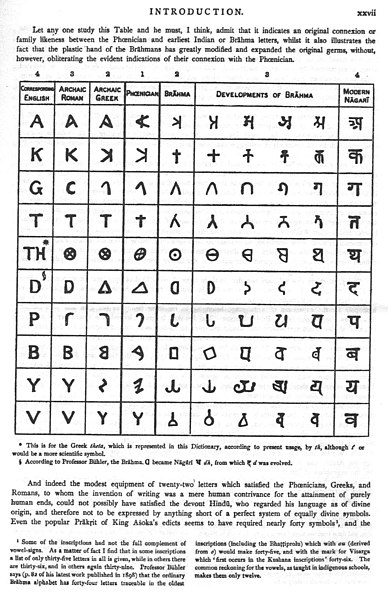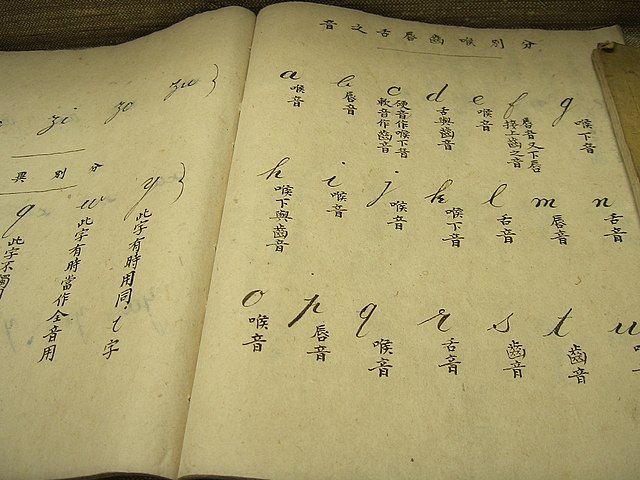In a right-to-left, top-to-bottom script, writing starts from the right of the page and continues to the left, proceeding from top to bottom for new lines. Arabic, Hebrew, and Persian are the most widespread RTL writing systems in modern times.
Image: Ancient Chinese Writing on Western Zhou Bronze Lai Plate (closeup)
A writing system comprises a particular set of symbols, called a script, as well as the rules by which the script represents a particular language. Writing systems can generally be classified according to how symbols function according to these rules, with the most common types being alphabets, syllabaries, and logographies. Alphabets use symbols called letters that correspond to spoken phonemes. Abjads generally only have letters for consonants, while pure alphabets have letters for both consonants and vowels. Abugidas use characters that correspond to consonant–vowel pairs. Syllabaries use symbols called syllabograms to represent syllables or moras. Logographies use characters that represent semantic units, such as words or morphemes.
Written Chinese uses morphosyllabic characters assembled from phonetic and semantic components in order to encode the spoken language
A Specimen of typefaces and styles, by William Caslon, letter founder; from the 1728 Cyclopaedia
Table of scripts in the introduction to Sanskrit-English Dictionary by Monier Monier-Williams.
This textbook for Puyi shows the English alphabet. Although the English letters run from left to right, the Chinese explanations run from top to bottom then right to left, as traditionally written.





